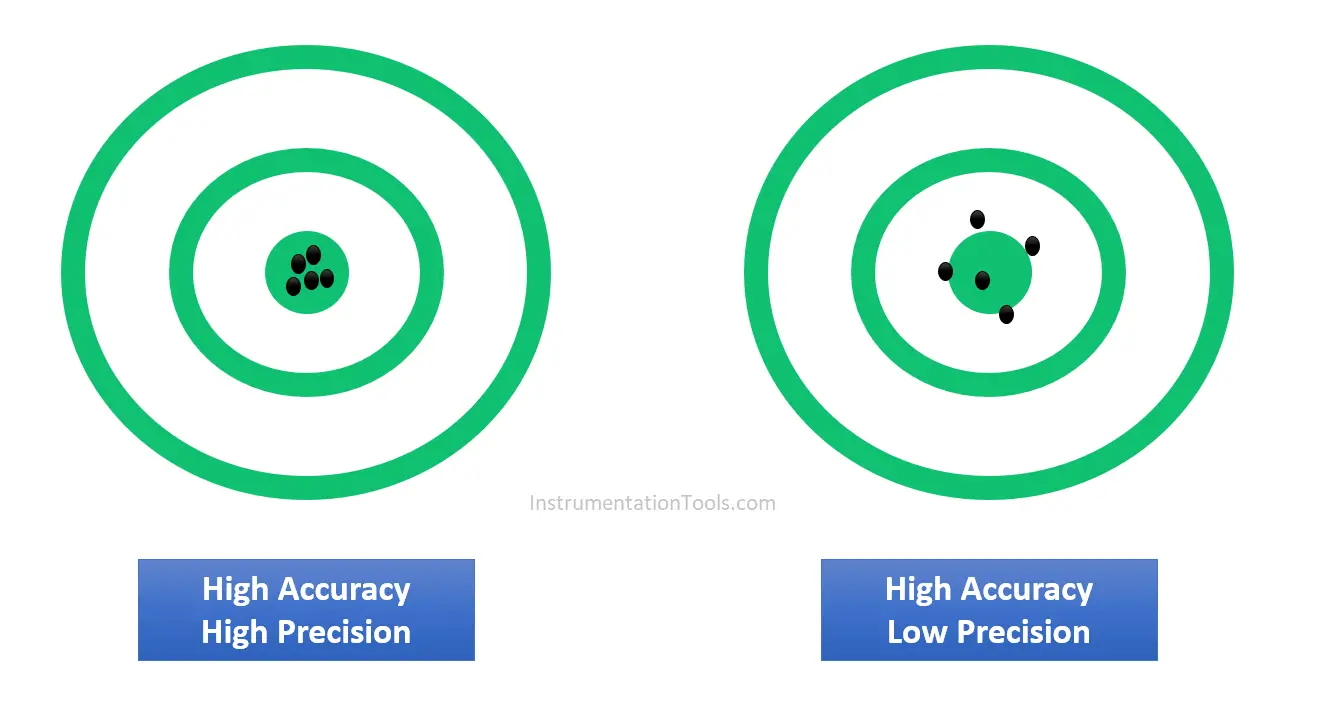Imagine, if you are measuring Voltage using Voltmeter. The true value of Voltage is 230 Volt.
You noted readings as follows: 230.22, 230.22, 230.21, 230.21, and 230.22 Volt.
These readings are very near to each other. This nearness (closeness) of successive readings is called precise readings.
You measure readings as 230.03, 230.09, 230.01, 230.05, 230.07 volt.
These readings are near to the True value of Voltage. I.e. Readings are accurate.
Accuracy is how close a value to its True Value.
Precision is how repeatable a measurement is.

The accuracy of instruments is defined by the manufacturer.
Precision is user-defined and also property of instrument.
Now let’s take an example of measuring 230 volts with an accuracy of 0.1 V. i.e. instrument is within accuracy if the voltage is in between 229.9 to 230.1 volt.
If you measured reading as 230.05, 230.03, 230.08, 229.98, 230.06 volt, readings are accurate but not precise
If you measured readings as 230.17, 230.18, 230.17, 230.19, 230.17 volt, readings are precise but not accurate.
If you measured readings as 230.01, 230.02, 230.01, 230.02, 230.02 volt, readings are Accurate and Precise.
If you measure reading as 229.19, 230.24, 230.19, 230.26, 229.28 volt, readings are neither Accurate nor Precise.
Now Imagine, real-life scenario
You are standing at railway platform and indicator shows train will be arriving at 1.04 pm. And train arrives accurately at 1.04 pm. i.e. train is accurate.
Now, indicator shows the train will be arriving at 1.04 pm, and the train arrives at 1.10 pm. This repeats daily for 5 days. I.e. train is precise but not accurate.
Now, the indicator shows the train will be arriving at 1.04 pm, and the train arrives at 1.10 pm, 1.15 pm, 1.00 pm, 1.13 pm, and 1.20 pm for 5 days. I.e. train is neither precise nor accurate.
If you liked this article, then please subscribe to our YouTube Channel for Instrumentation, Electrical, PLC, and SCADA video tutorials.
You can also follow us on Facebook and Twitter to receive daily updates.
Read Next:
Omron PLC logic for sorting the number of products and counting the number of products…
Learn the water fountain control logic using the PLC timers programming to control the high…
Open Telemetry is a framework for collecting data in cloud-native applications including tracing, metrics, and…
This article is about controlling the Pneumatic cylinder and Pneumatic motor in the assembly line…
In this post, we will learn the basic requirements for a network switch to be…
The PLC panel and MCC panel interface signals are start, stop, run feedback, trip, local…